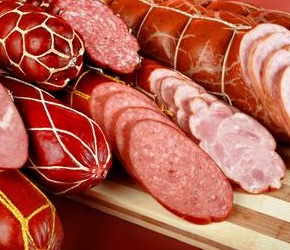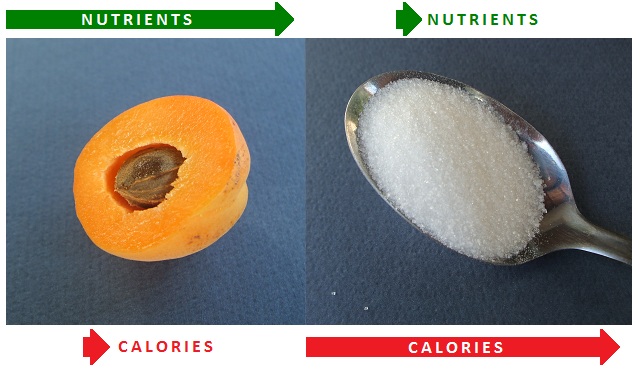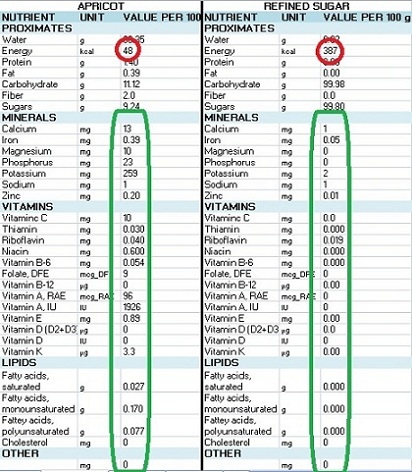I think that skepticism, the chronic one, which is different from a healthy critical thinking, is one of the stupidest traits a person can have.
Author Archives: PaoloDS
The 7 worst foods you can eat
It’s a good habit to keep a red flag in our mind for a small set of foods that are particularly unhealthy or dangerous. I am adverse to the mindset of being perennially obsessed by food dangers, but there are some cases where -yes- it is wise to keep the attention level very high, always.
It’s the case of the foods that I put in this short list: they are so harmful, so abundantly and mindlessly proposed in our daily diet, that it’s better to keep them flagged in our brain’s “cache memory” to, hopefully, reject them almost automatically as we are offered. Let’s see what we have.
1. BURNT FOOD
You like burnt pizza crusts? Crunchy overcooked toasts? Barbecue meat? Well, I hope you’ll like them less when you read this: you are eating the worst, most damaging, toxins-loaded food I can ever think of. You see those black spots? They are pure cancer.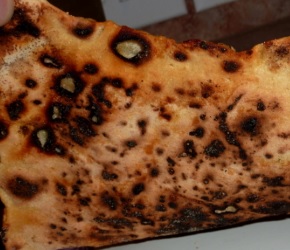
Burnt food is one step above all the other elements in this list, and I have no doubt about putting it in first place: while all the other foods here are “only” unhealthy, this is dangerous.
Dangerous because when overcooked, the starches in foods like pizza and toasts, change their structure and produce compounds that have been analyzed and declared toxic in many studies.
The most known of these toxins produced is called Acrylamide, a substance present also in chips and deep fried foods. Acrylamide is of concern as carcinogen, as neurotoxin and as cause of infertility.
Then we have barbecue, another awful presence in your diet. Not only it’s typically based on red meat, which is not the healthiest food itself, and not only this meat is usually overcooked or burnt too. 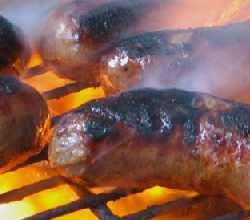 No, there’s a plus: the barbecue cooking process. It produces huge amounts of dioxin, and if you inhale that smoke for awhile it’s the equivalent of smoking thousands of cigarettes. Like having your personal incinerator at home.
No, there’s a plus: the barbecue cooking process. It produces huge amounts of dioxin, and if you inhale that smoke for awhile it’s the equivalent of smoking thousands of cigarettes. Like having your personal incinerator at home.
How do you protect yourself from these foods? My advice is:
– when you cook, cook at low temperatures for longer, and prefer methods like baking or steaming, fry the less you can, if you really have to make barbecue don’t put your food directly on the flame, and stay near the grill the minimum necessary
– when others cook, remove the black spots from pizza (so often the bottom is burnt), fries, meat and in general avoid the burnt parts of the foods you eat.
2. REFINED SUGAR (& PASTRIES)
Knowing what crusade I do against it (I completely quit eating/drinking anything with refined sugar in it more than ten years ago!) some friends who will read this list will be surprised to find sugar “only” in second. So let’s clarify: burnt food comes in first because it’s seriously carcinogenic and nothing beats that, but refined sugar is still a bad, bad, bad, bad, bad guy.
Refined sugar is undoubtly one of the major long-term causes of death (and also of reduced physical/mental abilities of people) in modern societies, where sugary processed craps are terribly abundant in the diet. 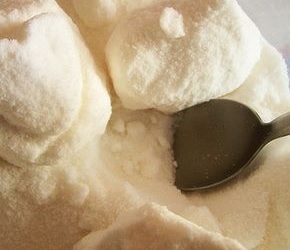
Sugar is the worst empty-calorie food. Full of calories (fattening), zero nutrients (useless for our body). It causes tooth decay. It causes diabetes. It upsets the metabolism, it causes spikes in blood sugar, with the result that people who consume a lot of it are usually sluggish, slow, drowsy.
Don’t misunderstand: you do need sugar in your diet. And it’s perfectly ok to crave sweets. Just take sugar from naturally sweet foods (like fruits or honey) and leave refined sugar alone.
And a final note: refined sugar multiplies its horrific impact when eaten in conjunction with refined white flour (all this I wrote for refined sugar is basically the same for refined white flour). This happens in all pastries, cakes, croissants, biscuits. These are all great foods…if you want to get fat and get diseases.
3. CHIPS
The idea that chips are made of vegetables and therefore could have some healthy benefits should really not cross your mind! I used to eat a lot of these years ago, now that I know how unhealthy they are, I try to never eat them. When I crave some junky snack, I go for homemade popcorn or even peanuts, that are much better, despite being very caloric.
The problems with chips are the following. 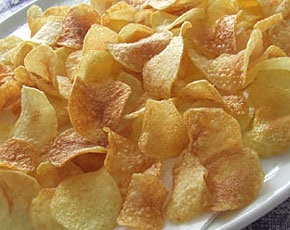
First, yes, they are made from vegetables: potatoes. But in the first place potatoes are not the most nutrient-dense in the realm of vegetables, in fact it’s quite true the opposite: they are pretty low in nutrients.
And of course they are starchy foods, rich in carbohydrates. This is why they are usually one of the most classical booboos among bodybuilders.
Second, to produce industrial chips the potato slices are deep fried (in low quality oils), so that the few nutrients present are completely destroyed. Frying also produces high amounts of acrylamide, similarly for what happens with black-burnt foods (even if not to those extreme levels). 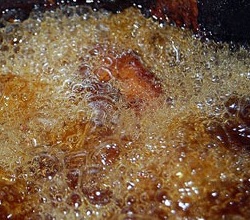
Third, enormous amounts of sodium are added to make chips more addictive (once you start eating you feel thirsthy and you crave more and more). So much sodium is not your friend: among the several negative effects, it raises your blood pressure a lot.
Stay away from industrial chips, and in general from all deep fried foods.
4. MARGARINE
It tells a lot that Wikipedia defines Margarine as a “foodstuff”, “an instance of material which may be used as food”. I wouldn’t know how to say it better.
Margarine has been “invented” in the 1800s as an industrial counterpart of butter, a very cheap one. Butter and margarine have a similar amount of fat, a similar texture, a similar color. Here is where similarities end. 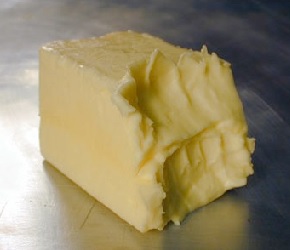
Now let’s see the differences. Classic margarine is not a dairy product but it’s made of vegetal oils, obtained by pressing non edible plants. These oils are extra-poor in terms of nutrition, dangerous for the coronaries and frequently come from gmo plants.
The oils are hydrogenated to create a solid product that can be marketed in the stores, but unfortunately the hydrogenation produces trans fats that are something you really need to avoid, because they interfere with the mechanisms of regulation of cholesterol.
The color itself (slight yellow) is obtained by adding colorants, to remember butter. It’s an horrible food. Avoid margarine. If you really can’t get used to eat healthy fats (like nuts, seeds, avocado…) then at least go for butter. It’s much healthier.
Of course, it tastes good. But I can imagine only two reasons why people would want to eat processed meat: either they don’t want to know, or they don’t care to know. Know what?
Simple, they don’t want/care to know how it’s produced and how unhealthy it is.
This kind of meat is made using the residuals of other types of meat that are more valuable. What’s inside these pink pipes are leftovers. I can just imagine what animal parts end up in those machines to be grinded. Is it likely that a commercial meat industry would avoid to use tails, or ears of the animals for example? I don’t think so… Anyway.
The meat, from whatever part of the animal’s body it comes from, is grinded to produce a sort of paste. To the paste are added sugars (fructose, sucrose, glucose, lactose) to help preservability and to create a substrate favorable for lactobacilli. Lactobacilli produce lactic acid, which has a low pH and inhibits the growth of undesired microorganisms. 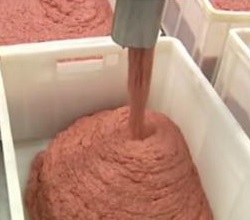
Then milk powder and caseine derivatives are added, typically from 2 to 4%, to improve the texture and omogeneity on the paste.
Additives are added as well: especially nitrites and nitrates (sodium and potassium), to make the meat look more red, and slow down the deterioration caused by bacteria. These preservatives are a serious concern as causes of cancer.
Interestingly, one of the nitrates commonly used, potassium nitrate, has also another name: saltpeter. And it’s not only used as food additive… but also as gunpowder!
6. PROCESSED FISH: SURIMI
Right after processed meat, comes its fish alter-ego: surimi.
You know what it is right? Those appearently innocuous white and red steaks sold in the supermarkets, and more and more frequently served with salads and sushi. 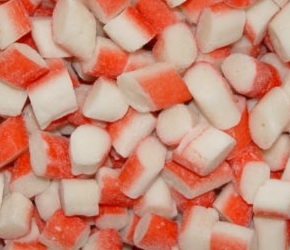
This food is a huge lie. It’s not crab’s pulp at all. It is processed to look like it. Colorants are added to make it look like it.
But it actually a paste made from the leftovers of the fish processing industry, with undefined ingredients from asiatic industrial waste, oils, fats and various additives.
It eludes many regulations on traceability, in many cases declaring “surimi” on the nutrition facts label is enough. 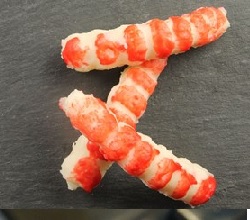
It’s one of the foods with the highest records of alterations, due in many cases to unproper sterilization of the product. It can can contain almost everything, including polyphosphates. It also comes shaped as shrimps sometimes. But don’t get fooled…
7. CHEESE
Surprise surprise. I am sure many were not expecting this. But I have no doubt about it: despite tasty, cheese is surely one of the worst foods for your health.
Cheese is basically all salt and cholesterol. Just this.
When people ask me advice about how to lose weight, “cut out cheese” is typically one of the first things I say. It’s a very fattening food and it has a very poor nutritional value. 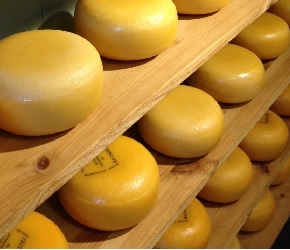
The common belief is that cheese is good because it has calcium, which is true. But it’s not the most easily assimilable type of calcium (some studies reported how populations that consume more dairy products have higher rates of bone fractures and osteoporosys) and it comes with lots of undesirable downsides.
Cheese also causes very often an overproduction of phlegm in the respiratory system, this is why one of the first advice given to singing students is to limit or ideally remove cheese from their diet. Cheese is typically banned from the diet of singers, speakers, and people who work with their voice.
I personally experienced this: when I drastically reduced the amount of cheese in my diet my breathing improved dramatically, not to mention how “lighter” my body started to feel.
I admit that cheese tastes very good, in fact I still eat once/twice a week a small piece of mozzarella or parmigiano. It’s difficult to give up completely. But when you eat it, just eat it with the awareness that it’s not the best food, so knowing that, try to limit the quantities you consume.
PS: I voluntarily excluded fast food and commercial foods from this top 7. There is no point in putting them in, since they’re a combination of everything that’s bad: sugar, salt, refined flours, hydrogenated fats, additives, colorants, preservatives… It’s obvious that they are the worst of the worst!
Not my masterpiece, but anyway
How to overcome sugar addiction
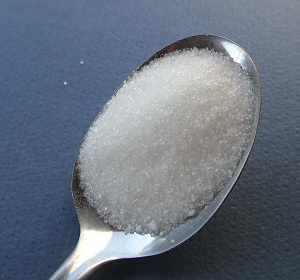 If you’re trying to discover how to overcome sugar addiction, here is a first important note: you don’t need to. Your body needs sugar, this is the simple reason why you crave sweet tastes. For example, I usually crave sweets at the end of a meal (and I satisfy these cravings with fruits).
If you’re trying to discover how to overcome sugar addiction, here is a first important note: you don’t need to. Your body needs sugar, this is the simple reason why you crave sweet tastes. For example, I usually crave sweets at the end of a meal (and I satisfy these cravings with fruits).
Be receptive with your body, it sends you specific signals to tell you what it needs in every moment.
The smart thing to do is to satisfy these needs with healthy foods, for example:
cravings of carbohydrates —> whole bread
cravings of proteins —> fish
cravings of fats —> nuts
While the non-smart thing to do is to satisfy these needs with unhealthy foods, for example:
cravings of carbohydrates —> white bread
cravings of proteins —> hamburgers
cravings of fats —> potato chips
Now let’s focus on sugar. It’s clear already that there are two ways to satisfy your -perfectly normal- cravings of sweets.
The smart one: craving of sweets —> fruits, honey, milk
The non-smart one: craving of sweets —> foods with refined sugar. Here we are!
THE “REVELATION”
You may be wondering how to overcome sugar addiction because you heard/read somewhere that sugar is bad. And they were right, but they were talking only about a specific kind of sugar: refined sugar. The white granular substance that is commonly added to coffee, chocolate, pastries, candies and countless other foods.
For its pervasiveness and for the damages it causes to health, I consider it one of the worst pleagues in the modern societies. Seriously.
Pervasiveness. Refined sugar is everywhere in processed foods. Some of them could be considered beyond suspicions, but when you check at their nutrition facts label: sugar. In white bread, canned legumes, salads, soups, sauces, ham… not to mention the atrocious amounts used in “very suspicious” foods, like sodas or pastries.
We’ve been taught from the food industry to expect an easy, sweet taste whenever we eat, whatever we eat. This is why it’s so easy to develop a sugar addiction.
Damages to health. Refined sugar is a non-food, artificially created in the industries after a lot of processing. It is the perfect “empty calories food”, meaning that it has a lot of calories (and therefore it’s fattening) but it is completely empty of nutrients. When I think at the definition “overfed and undernourished” I see refined sugar in front of my eyes.
The appetite of a person is finite. When you’re addicted to refined sugar you consume so much of it that you satiate your appetite by eating nothing (in terms of nutrition), and as consequence you prevent yourself from satiating your appetite with nutrient-dense foods.
What to do then?
THE SOLUTION
Keep eating sugar, but another kind of sugar, and in a different way. Refined sugar is not the only way to satisfy your cravings for sweets. What you should ask yourself then is not how to overcome sugar addiction in general, but: what kind of sugar should you eat? My answer is simple: eat natural sugar that:
– is packed in a food that contains other useful nutrients
– is packed in a food with a low glycemic index
The solution for overcoming a sugar addiction is simple: don’t try to overcome anything, just go for fruits when you crave sweet tastes.
SUGAR PACKED WITH OTHER NUTRIENTS
To understand the first criterion, here is a useful comparison between fruit, the healthy sugary food for excellence, and its refined unhealthy counterpart, table sugar. Both taste sweet, but there is an important difference.
Fruits are low in calories and high in nutrients. Fruits have a high nutrient density.
Table sugar is the opposite: high in calories and almost-zero in nutrients. Table sugar has a very low nutrient density.
As an example here is a nutritional table for an apricot and table sugar. Check the calories and the list of the nutrients.
Have you noticed? This is what I am talking about.
SUGAR PACKED IN FOODS WITH LOW GLYCEMIC INDEX
Another important factor in the process of overcoming refined sugar addiction is recognizing that there are four different types of basic sugar, and different ways of eating them. They are:
Glucose, the main sugar used by our cells as the primary source of energy
Fructose, the natural sugar present in fruits and vegetables
Sucrose, the common table sugar
Lactose, the sugar present in milk
There is a series of health implications when you continuously consume foods whose sugars are absorbed rapidly and sent in the blood stream (foods with high glycemic index).
This is the case of Glucose: when you eat glucose it goes to the stomach, to the intestines and then directly in the blood stream to be sent to the cells of our body. It’s absorbed very quickly.
Fructose on the other hand has a slower metabolic pathway, because it requires chemical transformations in the liver before it is sent to the blood.
Sucrose is composed by both: the molecule is half fructose and half glucose. So its glucose goes directly in the blood stream and its fructose goes in the liver for further processing.
Now, the point “which sugar is the best to eat” is not the key, since after all they’re all sugars and consumed individually and in exaggerated quantities all of them can cause troubles to the metabolism. The key point is to switch from foods with high glycemic index containing refined sugar, to foods with low glycemix index containing natural sugar, like fruits.
The reason why fruits taste sweet but have a low/medium glycemix index is that fructose in fruits is encased in a fiber rich flesh that slows and reduces its absorption in the body. Fruits satisfy any need for sweet taste and don’t cause spikes in blood sugar (and their relative negative consequences, like inflamations, continuous hunger, low energy) as refined table sugar does. Fruits win again.
AND ME?
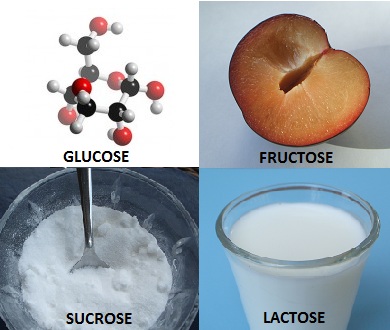 I discovered all this around age 20, at first motivated by being tired of all the dental caries I was having in that period.
I discovered all this around age 20, at first motivated by being tired of all the dental caries I was having in that period.
I decided to cut out refined sugar from my diet, and I did it completely. No chocolate, pastries, candies anymore. People were surprised when I told them (now they are used to it since it’s more than 12 years from my last processed sweet). The question I get asked more is “Oh my god, how can you live without sugar?” and “But you should eat sugar, your body needs it!”.
Both questions are interesting, since I actually never stopped eating sugar, I just stopped extracting it from non-nutrient, high glycemic index junk food. I never wondered how to overcome sugar addiction, and even today I eat as much sugar as anyone else if not more (I eat tons of fruits everyday).
I just made a shift, since long time. I was addicted to table sugar and now I only eat natural sweet foods: fuits, honey, milk (only organic). It really didn’t cost me a big sufference or a superhuman effort. To overcome your addiction to refined sugar, you may try to do the same.
What is nutrition freak?
Nutrition Freak is a project I started a couple of years ago, to spread awareness about health and nutrition. It’s born as an indipendent website (here the link: nutritionfreak.com), but from now on I’m going to publish all my articles about health topics here in paolods.com. Nutrition is still one of my main interests, but I decided not to grow it anymore separatedly. I’ll gradually bring all the nutrition articles here and cancel nutritionfreak.com. I will still keep ownership of the domain name though, because I really like it. Stay tuna!

